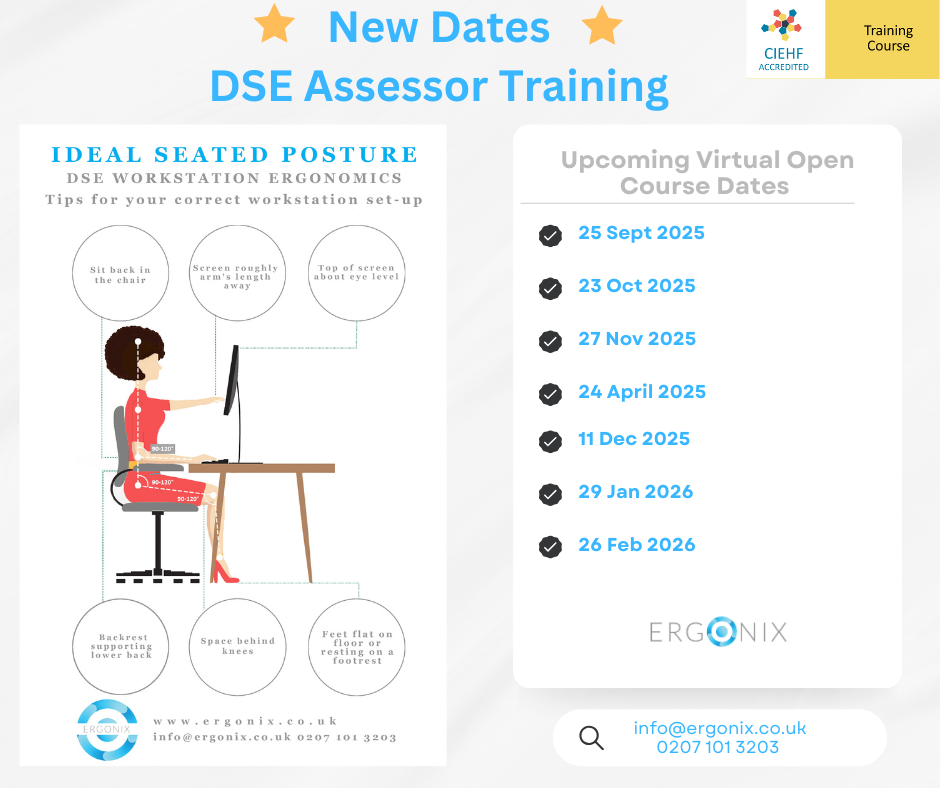 Conducting DSE (Display Screen Equipment) risk assessments is a crucial legal requirement to ensure the wellbeing of employees and minimise health risk associated prolonged computer use. Here are some insights and tips we’ve learned from conducting these assessments:
Conducting DSE (Display Screen Equipment) risk assessments is a crucial legal requirement to ensure the wellbeing of employees and minimise health risk associated prolonged computer use. Here are some insights and tips we’ve learned from conducting these assessments:
Ergonomics is Key
Pay close attention to the ergonomics of the workspace. Ensure that computer monitors are at eye level, keyboards and mice are at the right height and chairs provide proper lumbar support. These adjustments can significantly reduce the risk of musculoskeletal issues.
Equipment
Remember to fit the equipment to the worker. Not the other way around! It is crucial to ensure that the equipment used by employees is adjustable to their specific needs. This means that chairs, desks, monitors and peripherals should be adaptable to accommodate each worker’s unique requirements. This approach can significantly enhance comfort and reduce the risk of musculoskeletal injuries by allowing employees to tailor their workspace to the tasks they carry out and to their physical characteristics.
Regular Breaks
Encourage employees to take regular breaks. It’s easy to get absorbed in work and forget to move, but taking short breaks every hour can reduce eye strain, fatigue and discomfort.
Eye Care
Remind employees to follow the 20-20-20 rule- every 20 minutes, take a 20-second break and focus on something 20 feet away. This helps alleviate eye strain caused by staring at screens for extended periods.
Workspace Lighting
Ensure that workspaces are well-lit, and screens are not affected by glare or reflections. Proper lighting reduces eye strain and the risk of headaches.
Training and Awareness
Regularly educate employees on the DSE best practices. Make sure they are aware of the importance of the correct posture, keyboard and mouse usage, and the potential risks associated with prolonged screen time.
Individual Assessments
Understand that every employee is different. Some may have specific needs, such as prescription glasses or special equipment due to medical conditions. Tailor assessments to individual requirements.
Documentation
Keep thorough records of assessments, any issues identified and the actions taken to address them. This documentation can be crucial for compliance and tracking improvements over time.
Regular Reviews
Don’t view DSE assessments as a one-tick task. Schedule regular reviews and updates to ensure that the work environment continues to meet the needs of employees.
Employee Involvement
Encourage employees to actively participate in the assessment process. They often provide valuable insight into their own comfort and can suggests improvements.
By focusing on these aspects, you can create a safer and more comfortable work environment for your employees while complying with the DSE legal requirements.
If you would like to find out more about our virtual or face-to-face DSE Assessor Training Courses and DSE Workstation Assessments, we would love to hear from you!







